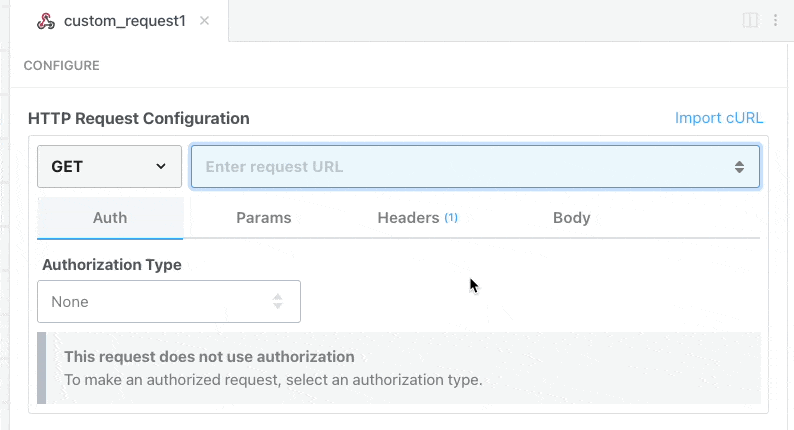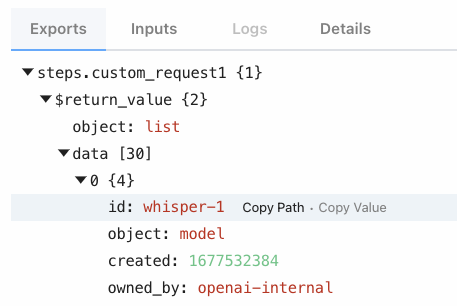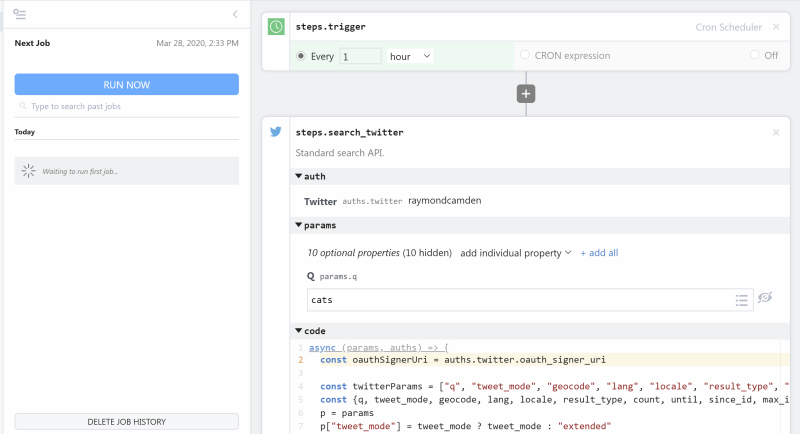What do you want to automate
with Bot for Slack and HTTP / Webhook?
Prompt, edit and deploy AI agents that connect to Bot for Slack, HTTP / Webhook and 3,000+ other apps in seconds.
Trusted by 1,000,000+ developers from startups to Fortune 500 companies
Popular Ways to Connect Bot for Slack with HTTP / Webhook#
Popular Bot for Slack and HTTP / Webhook Triggers#
Get a URL and emit the full HTTP event on every request (including headers and query parameters). You can also configure the HTTP response code, body, and more.
Get a URL and emit the HTTP body as an event on every request
Emit new event when the content of the URL changes.
Emit new event when a message is posted in a direct message channel (Bot). To open a conversation, use the Pipedream Action "Send a Direct Message" to send a message from the Bot, or enable direct messages to the Bot in your App Settings (Settings->App Home->Show Tabs->Messages Tab), and send a direct message to the Bot.
Emit new event when a new message is posted to a public, private or group channel (Bot)
Popular Bot for Slack and HTTP / Webhook Actions#
Add an emoji reaction to a message. See the documentation
Send an HTTP request using any method and URL. Optionally configure query string parameters, headers, and basic auth.
Overview of Bot for Slack#
The bot for Slack allows you to build rich, interactive bots for Slack workspaces. These bots can respond to messages, post updates, and interact with users in various ways. With the bot for Slack on Pipedream, developers can create automated workflows that trigger on specific events in Slack, such as new messages or reactions, and then perform defined actions, like sending data to other apps or processing the information within Pipedream's serverless platform. This tight integration with Pipedream enables both simple and complex automations, leveraging Pipedream's ability to connect with numerous apps and its powerful built-in code steps.
Connect Bot for Slack#
import { axios } from "@pipedream/platform"
export default defineComponent({
props: {
slack_bot: {
type: "app",
app: "slack_bot",
},
},
async run({steps, $}) {
return await axios($, {
url: `https://slack.com/api/auth.test`,
headers: {
Authorization: `Bearer ${this.slack_bot.$auth.bot_token}`,
},
method: 'post',
})
},
})
Overview of HTTP / Webhook#
Build, test, and send HTTP requests without code using your Pipedream workflows. The HTTP / Webhook action is a tool to build HTTP requests with a Postman-like graphical interface.

Point and click HTTP requests
Define the target URL, HTTP verb, headers, query parameters, and payload body without writing custom code.

Focus on integrating, not authenticating
This action can also use your connected accounts with third-party APIs. Selecting an integrated app will automatically update the request’s headers to authenticate with the app properly, and even inject your token dynamically.

Pipedream integrates with thousands of APIs, but if you can’t find a Pipedream integration simply use Environment Variables in your request headers to authenticate with.
Compatible with no code actions or Node.js and Python
The HTTP/Webhook action exports HTTP response data for use in subsequent workflow steps, enabling easy data transformation, further API calls, database storage, and more.
Response data is available for both coded (Node.js, Python) and no-code steps within your workflow.

Connect HTTP / Webhook#
// To use any npm package on Pipedream, just import it
import axios from "axios"
export default defineComponent({
async run({ steps, $ }) {
const { data } = await axios({
method: "GET",
url: "https://pokeapi.co/api/v2/pokemon/charizard",
})
return data.species
},
})
Community Posts#

